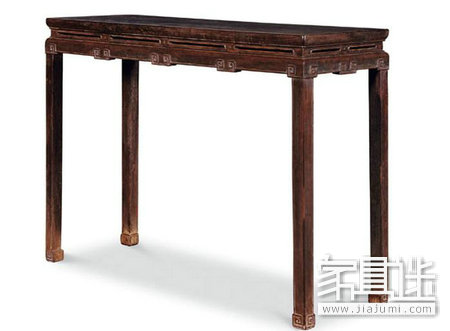Red sandalwood is one of the most valuable woods in the world and is mainly produced in the tropical regions of the South Sea Islands. China's Guangdong and Guangxi also produce rosewood, but the number is small. Indian lobular rosewood, also known as chicken blood rosewood, is the most precious wood known at present and is the most advanced of rosewood. Saying 10 Tan nine empty, the largest rosewood diameter is only about twenty centimeters, their precious one can imagine. Today we will talk about the three main problems of red sandalwood. One of the main problems with red sandalwood : first talk about the water content of wood and the problem of cracking. Obviously, when the wood has just been cut down, there will be a certain amount of water content, so the density (in this case, the physical density, that is, how many grams per cubic centimeter) will be slightly larger. After a long period of dryness, the water will be lost. Dry materials are suitable for processing. In the process of dryness, many woods will have more or less cracks, which is caused by the internal stress changes of the wood during the dehydration process and is difficult to avoid. The main problem of red sandalwood is that the seedlings of red sandalwood are not purple heartwood. Only when they grow for a certain period of time, the heartwood will gradually turn purple (of course, the fresh red sandalwood is orange-red), and its essence is red sandalwood. The accumulation of prime. The texture of the excellent red sandalwood, the feeling is pure rosewood, pressed, almost no feeling of wood fiber, carving and polishing when the texture is similar to nephrite. The so-called old red sandalwood is fine, or there is no brown eye. The reason should be that many brown eyes are filled with red sandalwood, so it is not visible. For the same reason, many of the old rosewood's annual ring line is almost invisible due to too much red sandalwood. The density of the rosewood is higher and the density of the wood fiber is smaller. Therefore, the old red sandalwood containing red sandalwood has a relatively high density, and may exceed 1.3 after drying. The new material red sandalwood has a shorter growth time, and the time for accumulating the red sandalwood is less than one or two hundred years, so the density of the wood is low. . Therefore, only wild rosewood with slow growth and long growth cycle can be called old red sandalwood. After the new red sandalwood is cut down, even if it is dried for decades, the density and the content of rosewood will not change. Extended reading: four types of sandalwood that are easily confused with red sandalwood The red sandalwood material that has been placed for many years is not cracked, but the cracked part has been cracked. The part that has not been cracked has reached the internal stress balance, and the finished product is less likely to crack again. We can see that some polished sandalwood wood has flame marks on the surface. These lines are caused by cracks on the surface of the wood. The part under the crack is oxidized faster and becomes purple-black. Therefore, even if the crack is worn away after grinding, the oxide traces under the crack. Still. The main problem of red sandalwood is three: Finally, talk about the hollow problem. It is said that it is ten sands and nine empty, the actual proportion may not be so much, but it will not be less. The reason for the hollowness is also easy to understand. Isn't the tree old? This is a good statement, but the hollow of the rosewood also has its special reason. First, when there is a hollow tendency, the most central part has grown for more than five hundred years. Secondly, as long as the rosewood tree is alive, it will always produce the rosewood and store it in the trunk. Therefore, the conduits of the heartwood near the center will be filled with the sapphire (and sometimes the mineral crystals of Venus), slowly becoming more and more compact, and because of this, they are rooted, The connection of the leaves will slowly break. It is like a fruit, and once the nutrient supply is stopped, they will slowly rot. Of course, this hollow process of red sandalwood is very slow and should start from the roots. Extended reading: mahogany "senior scores" rosewood boss African pear last
Somipack manufactures the most popular types of packaging bag, which are almost used in packaging of most industries. We manufacture different sizes of printed bags.
We produce high quality printed bags with various designs, styles, shapes, colors, sizes, and long durability. It`s depends on which purpose to use. Mostly our clients ask for the plain, colored, multicolor, custom designs or single colored bags. We produce printed bags according to our customers` requirements. This packaging bags are perfect for filling several types of products/materials, because this printed bags are customized and comes with different sizes, shapes and also comes with the euro-slot, tear-notch, re-sealable zipper lock and degassing valve.
We offer the additional fitments facility with pouches for more convenience for filled products:
Zipper
valve
Slots for suspension
Transparent window
We have different forms of printed Packaging Pouches:
Stand-up Pouches
Flat Pouches
Flat Bottom Bags
Gusseted Bags
Spout Pouches
Printed packaging bags are used in many Industries such as:
Coffee Packaging Bags
Chips Packaging Bags
Nuts Packaging Bags
and many Others
Standing Pouch Printing,Plastic Pouch Printing,Custom Stand Up Pouches,Custom Printed Poly Bags Chaozhou Chao'an Xinmin Food Packaging Co., Ltd. , https://www.somipack.com